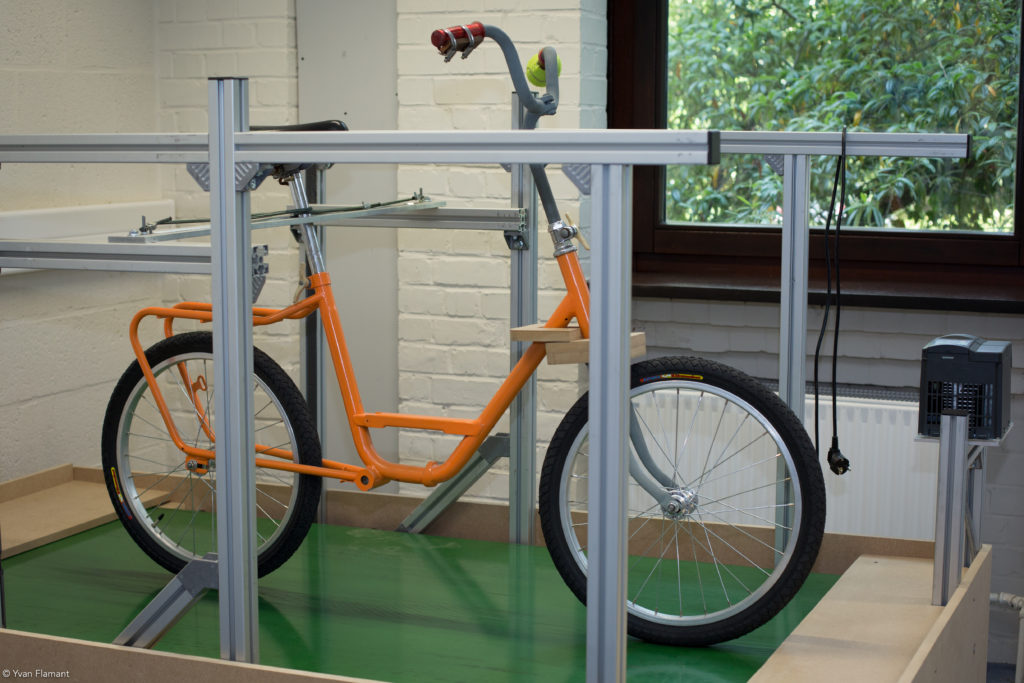Bicycle bench
Bicycle components
The bench is composed of a real bicycle placed
on a treadmill. Thanks to the regulator, one can adapt the speed to seed the
different dynamics effects.
No one will be placed on the bicycle but this last will have a security
bar that hold the bicycle on the treadmill. It is important to note that this
bar has a minimum effect on the bicycle dynamics. It is not due to this bar that the bicycle can
stand up by itself at high speed. Indeed, in cannot stand up by itself at low
speed.

Forward motion
When a bike moves forward, it can be in two different situations: high speed and low speed. In each of these situations, the bike has three different eigen modes: capsize, wobble and weave.
The difference is that at low speed, these modes are called unstable while at high speed they are stable. Concretely, this means that the bicycle is not going to stand up by itself at low speed, but it will at high speed.
In the videos below, the bicycle weave is visible for different speeds. Stability at high speeds can be confirmed. The experiment on the bench agrees with the simulation.
Videos below also illustrate the stability at high speed for different perturbations.
Backward motion
When moving backward, a bicycle is highly unstable. The phenomenon called caddie wheel appears and the bicycle fall off, no matters the speed. It can be seen on the following videos for the real bench and for the simulation.